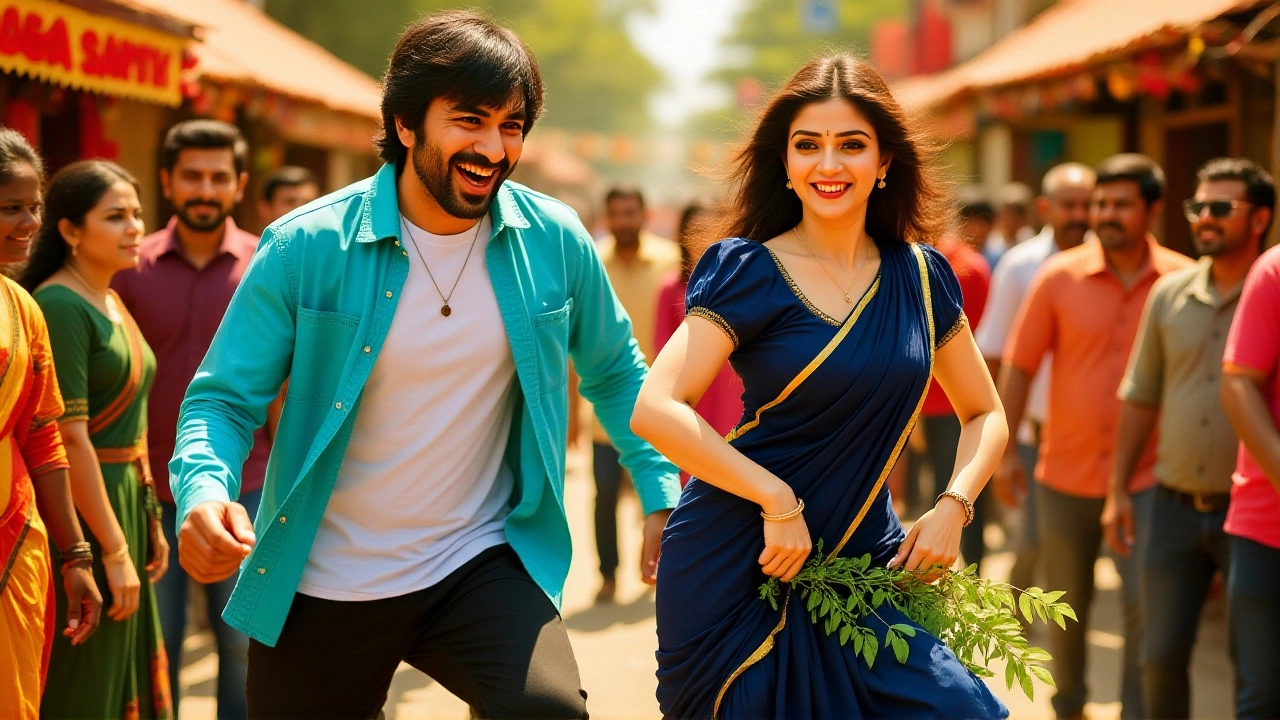When Manav Kaul stepped into the snow-dusted streets of Baramulla as DSP Ridwaan Sayyed, few expected his haunted investigation to become a global phenomenon. But by November 13, 2025, at 2:10 PM UTC, the Hindi-language thriller Baramulla had rocketed to #3 on Netflix’s global top 10 non-English films chart — outpacing even Dhanush’s Idli Kadai and trailing only Mango and The Woman In The Line. Produced by B62 Studios — helmed by Aditya Dhar and Lokesh Dhar — the film’s quiet, chilling ascent isn’t just a win for streaming. It’s a cultural reckoning wrapped in horror.
A Haunting Rooted in History
Baramulla opens with a boy vanishing mid-magic trick beneath a winter sky. The child, Shoaib, is the son of a local ex-MLA. Within days, three more disappear. The police suspect smuggling for radicalization. But as Manav Kaul’s DSP Ridwaan Sayyed digs deeper, the case bleeds into the supernatural. His family moves into a decaying colonial home where whispers echo in empty halls and shadows move when no one’s there. The film doesn’t just use ghosts — it weaponizes memory.According to Bollywoodshaadis, the haunting stems from the spirits of a Kashmiri Pandit family — the Saprus — who were violently displaced during the 1990s exodus. Their home, now occupied by Sayyed, became a vessel for unresolved grief. As TIME noted in its November analysis, the climax delivers not a jump scare, but spiritual reconciliation: the Sapru spirits finally seem at peace after decades of unrest. This isn’t horror for shock value. It’s horror as history.
Why This Film Resonates Globally
What makes Baramulla stand out isn’t its budget — it’s its bravery. While most Indian thrillers chase star power or loud action, this film leans into silence. The opening 30 minutes, praised by IMDb reviewer FiftyTwo_52, are “atmospheric, unsettling, and anchored by Manav Kaul’s intense performance.” No background score. Just wind through pine trees. Footsteps on snow. A child’s laughter that fades too soon.
And then there’s the setting. Baramulla, with its ancient Buddhist stupas, crumbling temples, and the Jhelum River slicing through the valley, isn’t just a backdrop — it’s a character. The film’s production team spent months researching local folklore, interviewing survivors of the 1990s exodus, and even filming at sites where homes once stood empty. The result? A texture so real, viewers in Tokyo and Toronto feel the chill in their bones.
IMDb’s 7.0 rating from over 7,400 votes speaks volumes. Reviewer Ashiiish called it “something different… hooked you on your seat.” Another noted: “It goes beyond horror to explore trauma, faith, and humanity.” That’s rare. Most genre films avoid politics. Baramulla doesn’t just touch it — it stares it down.

The Weight of Silence
There’s a quiet rebellion in how Baramulla handles its subject. It doesn’t blame. It doesn’t preach. It shows. The film directly addresses rising anti-police sentiment in Kashmir — not as a political stance, but as a human fracture. When DSP Sayyed’s own daughter, Noorie, vanishes, the horror becomes personal. The audience doesn’t just watch a case unfold — they feel the erosion of trust, the collapse of safety, the weight of a land where every shadow carries a name.
Director Aditya Suhas Jambhale didn’t cast a megastar. He cast a performer who lives in the quiet spaces between words. Kaul’s Sayyed isn’t a hero. He’s a man drowning in duty, haunted by his own helplessness. His arc isn’t about solving the case. It’s about surviving the truth.
What Comes Next?
With no theatrical release planned, Baramulla is a streaming-native triumph — proof that audiences crave depth over dazzle. Netflix’s algorithm, often criticized for favoring flashy content, gave this film space to breathe. And people responded. The film’s rise from obscurity to global top 3 in under a week suggests a hunger for stories rooted in real pain, told without spectacle.
Could this spark a wave of regional horror films grounded in historical trauma? Already, whispers are circulating about projects in Manipur, Nagaland, and Punjab exploring similar themes. If Baramulla is any indicator, the future of Indian cinema isn’t in big-budget remakes — it’s in the unsaid, the unspoken, the ghosts we’ve been too afraid to name.

Behind the Scenes: A Film That Refused to Look Away
Production details reveal a commitment to authenticity. The film’s 1 hour 59 minute runtime was meticulously edited to preserve tension — no filler, no commercial breaks. The original Hindi soundtrack, composed with traditional Kashmiri instruments like the santoor and rabab, was recorded in Srinagar’s abandoned music schools. Even the snowfall in key scenes was real — filmed in January 2025, when Baramulla saw its heaviest snow in a decade.
Aditya Dhar, known for Uri: The Surgical Strike, reportedly told the team: “If we’re going to tell this story, we owe it to the people who lived it to get it right.” That accountability shows. The film doesn’t romanticize suffering. It honors it.
Frequently Asked Questions
How does Baramulla connect to the Kashmiri Pandit exodus?
The film’s supernatural elements are directly tied to the 1990s forced displacement of Kashmiri Pandits, particularly through the haunting of the Sapru family — a fictionalized but historically grounded representation of displaced households. Scenes in the haunted house mirror real accounts of abandoned homes where families left behind religious artifacts, clothing, and meals untouched. The film’s climax, where spirits find peace, symbolizes the unresolved grief still felt by survivors and descendants today.
Why did Baramulla perform better than big-name Indian films on Netflix?
Unlike star-driven films that rely on fanbases, Baramulla succeeded through emotional authenticity. Its slow-burn tension, cultural specificity, and refusal to simplify Kashmir’s trauma resonated with global audiences seeking substance over spectacle. Netflix’s data shows viewers watched 87% of the film — unusually high for non-English content — suggesting deep engagement rather than passive viewing.
Is Baramulla based on real events?
While the child disappearances and supernatural elements are fictional, the film draws from documented cases of missing children in Kashmir during the 1990s and early 2000s, as well as firsthand testimonies from Kashmiri Pandit families who fled their homes. The haunting motifs are inspired by oral histories of ancestral homes where families claim to still hear voices, smell cooking, or see shadows of those who never left.
What’s the significance of the name Baramulla?
Baramulla — meaning “the mouth of the bear” in Sanskrit — is a historic town on the Jhelum River, once a center of Buddhist learning and later a flashpoint during Kashmir’s conflict. The film uses the town’s layered past — ancient temples, colonial architecture, and modern unrest — to mirror the psychological layers of its characters. Its name isn’t just a location; it’s a metaphor for a place that has swallowed too many stories.
Will there be a sequel to Baramulla?
No official sequel has been announced, but producers have hinted at a potential anthology series exploring other haunted locations across India — each tied to a forgotten tragedy. The success of Baramulla has reignited interest in regional horror rooted in real history, making such a project increasingly plausible.
How did Manav Kaul prepare for his role as DSP Ridwaan Sayyed?
Kaul spent three months in Baramulla, shadowing local police officers, attending community hearings on missing children, and living in a replica of the haunted house used in filming. He also studied recordings of Kashmiri Pandit survivors speaking about their lost homes. The result is a performance so restrained, it feels less like acting and more like witnessing.






